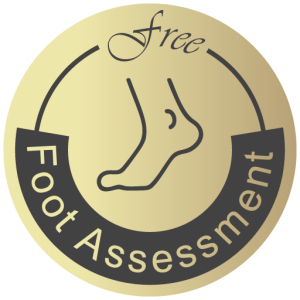



Feet are one of the most essential parts of our body, and they play a crucial role in providing stability and comfort while we walk, run, or stand. One of the key features of the foot is the arch, which helps to distribute weight evenly and absorb shock as we move. While most people have a naturally moderate arch, some individuals have high arches. If you’ve heard terms like High Arch Foot, high foot arch, or arched feet and wonder what they mean or how they affect your daily life, this comprehensive guide will help.
We’ll delve into everything you need to know about high arches, from their causes to how they can impact your well-being and what steps you can take to manage and treat them.
High arches, also known as cavus feet, refer to a condition where the arch of the foot is excessively high. Normally, a foot has a gentle curve or arch in the middle, which helps to absorb the impact as you walk or run. However, in the case of High Arch Foot, the arch is significantly elevated, which may result in certain areas of the foot not making contact with the ground when standing. This can lead to abnormal weight distribution and cause stress on the foot’s structure.
Unlike flat feet, where the arch collapses and touches the ground, high foot arch individuals experience less shock absorption and increased pressure on the ball of the foot and the heel. This can lead to discomfort, pain, and instability in the long run if not properly addressed.
The development of high arches in feet can be attributed to various causes, and it’s important to understand the root of the problem in order to address it effectively. Here are the most common causes:
For many people, High Arch Foot are inherited from their parents. If one or both of your parents have high arches, there’s a higher chance you’ll develop this condition as well. Genetic high arches can vary in severity, and it’s important to note that some individuals with high arches may not experience significant pain or discomfort.
Certain neurological conditions can affect the muscles and nerves in the feet, leading to the development of high arches. Conditions such as cerebral palsy, Charcot-Marie-Tooth disease, and spina bifida can result in abnormal foot structure, causing the arch to become higher than usual. These conditions may require specialized treatment or intervention to manage the symptoms.
Sometimes, High Arch Foot can develop due to an injury or deformity that affects the foot’s natural structure. For example, if you’ve suffered from a traumatic injury to your feet or ankles, the muscles and ligaments may adapt in a way that leads to an elevated arch.
Although rare, poor footwear choices over time may contribute to the development of high arches, especially if shoes don’t offer enough support or don’t allow for the natural motion of the foot. Wearing shoes that lack arch support or are improperly fitted can cause the foot to compensate in an unnatural way, leading to a higher arch.
A high instep refers to a pronounced curve on the top of the foot, located between the toes and the ankle. When you have High Arch Foot, you may also notice that the instep is higher than normal. This can make it difficult to find shoes that fit properly, as many standard shoes may not accommodate the extra volume of the top part of the foot. If you have both High Arch Foot and a high instep, it’s especially important to find footwear that provides ample room in the toe box
While some individuals with high arches may not experience any noticeable symptoms, others may face a range of discomforts. Common symptoms associated with High Arch Foot include:
If left unaddressed, high foot arches can affect a variety of activities and lead to long-term discomfort. Common issues related to high arches include:
Learn more about your arches and shock absorption.
While high arches may require some extra attention, there are several ways to manage the condition effectively:
Orthotic insoles are an excellent solution for providing support and cushioning for High Arch Foot. Custom orthotics or over-the-counter insoles designed for high arches can help redistribute pressure evenly across the foot, providing relief and preventing pain. Look for insoles for high arches that offer:
Choosing the right pair of shoes is crucial for managing High Arch Foot. Look for shoes that provide:
Certain exercises can help strengthen the muscles in the feet, which can improve stability and alleviate discomfort. For example:
If pain or discomfort persists, it’s essential to consult a podiatrist. A professional can provide personalized recommendations, including custom orthotics or other treatments, to help manage the condition effectively.
Learn more about foot wear.
High arches foot can cause discomfort, pain, and instability, but with the right approach, they don’t have to limit your daily activities. Whether through custom orthotics, proper footwear, or strengthening exercises, there are multiple strategies available to provide relief and improve foot health. If you’re experiencing symptoms of high foot arches, don’t hesitate to seek professional help to develop a comprehensive treatment plan tailored to your needs. With the right care, you can manage high arches and continue to live an active, comfortable life

